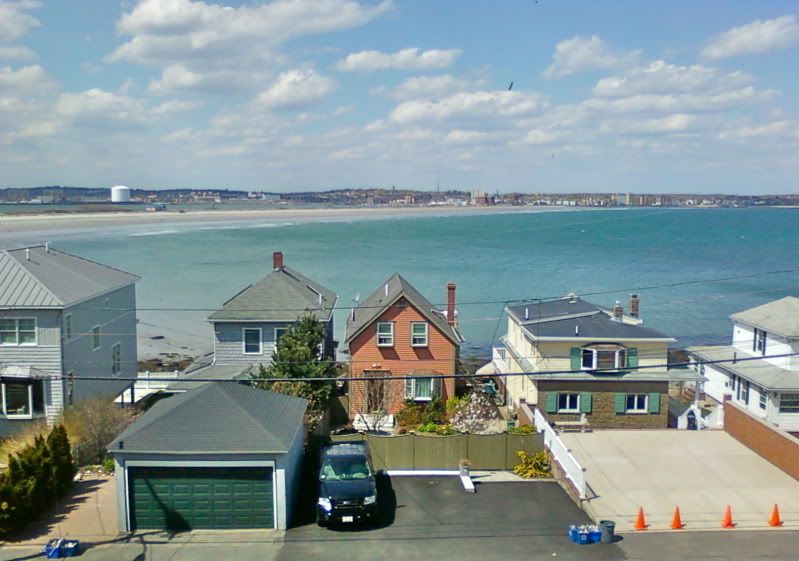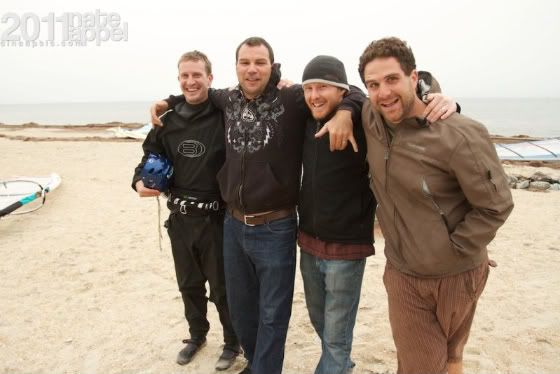I turned 32 a couple days ago. I know that's still too young to whine about, especially since I remain fairly gorgeous and healthy, but it's old enough to make one think, and I had plenty of thinking time this week in Lubec, Maine. I spent five days up there weeding and surveying an algae experiment with the help of PhD student Kylla Benes and her dog "Moose". To tell the truth Moose didn't help much, though he did provide entertainment and moral support. In return, I removed this humongous, bloated tick from under his collar.

Apparently ticks are one of the first signs of spring at the Northernmost point on the US Atlantic Coast. Other signs I noted were frogs calling in the bogs when the temperature got near 50 (it happened a few times), some green blades of grass poking up through the brown, and a helicopter crew filming near our Quoddy Head field site for an upcoming episode of the dumbass macho reality show, "
Dual Survival". (Fortunately we got to our field site at dawn before the rangers hired by the film crew blocked the trail- we had no idea what was going on until we ran into the one of the rangers as we were hiking back. He wasn't mad at us or anything, in fact he thought it was stupid that they had brought him out there, saying, "I don't why they just couldn't put up a sign instead of making me sit here on the trail all day.")
I'm back down in Massachusetts now, where spring is further along. The grass is completely green and there are buds on most of the trees. We're under a Biblical deluge at the moment, and not far from the rain / snow line...
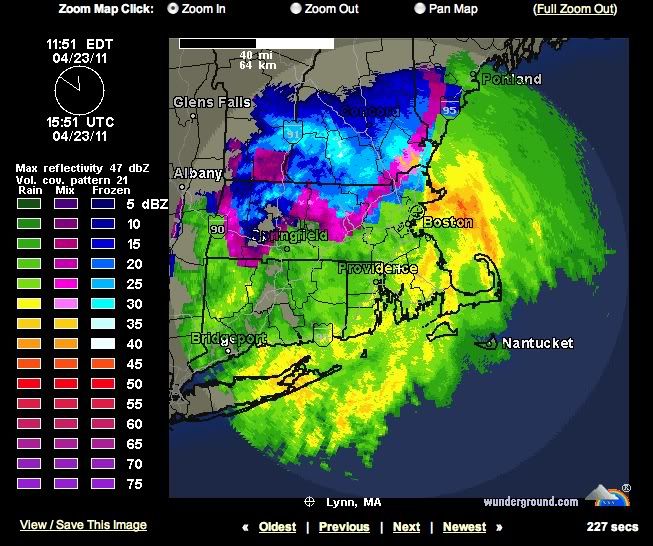
...but if the saying "April showers bring May flowers" holds true, next month should be amazing. Plus, Jesus is coming to earth, according to this lovely billboard in my town. Yay!

Back to the topic of weather: Having now inhabited a bunch of states, I've come to the conclusion that April isn't April everywhere. Here's what April is, really-
Washington State: April is actually March; a month that lasts until June or July.
Texas: April is June, plus lupine and azaleas.
Virginia: April is April, with a little June and February thrown in.
Florida: April is July, with a seabreeze.
Massachusetts: April is March.
Maine: April is February.
Another thing I can conclude is that how much I like living in one place or another is only sort-of related to the weather. A place's social harmony, closeness to nature, and R&R opportunities are more important, as are the details of my work and personal life when I'm living there. For example, I never clicked with Houston, TX, even though it was warm and sunny. The city was so sprawlingly flat, urban, anti-nature, and socioeconomically divided, and I was so poor and overwhelmed with undergraduate work and social/romantic struggles, that I rarely felt at home. Where I'm living now in
Lynn, MA is a crowded jumble of old houses, tenements, and run-down factories populated by gloomy old folks and poor new immigrants, and the weather is lousy... BUT I still like it better than Houston because my job is rewarding, I have access to windsurfing and snowboarding, my social life is ok, and I get a good fill of nature through my marine biology research trips.
The nature thing is especially important for me. Whether the weather is good or bad, every place has plants, animals, and natural features and processes that define its unique character and deepen its history. When I feel like I have a good connection to that natural history I can overlook stuff like rain and cold and stress. So I like places where the nature isn't totally obscured by development. Lynn has the sea, at least, and even Houston has a bayou or two that hasn't yet been turned into a paved flood channel.
Not this one, though.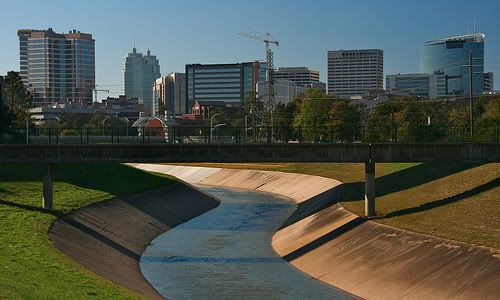
Um, what else is new? Two weeks ago I went to the Cape Cod peninsula for the first time, and was very stoked to find such a naturally-awesome and sparsely-populated place relatively close to my new New England home. I reckon Cape Cod is to the Boston area as Cape Hatteras is to the Hampton Roads area; a beachy, relaxing vacation place a little down and to the right; a bit far for a day trip but perfect for a weekend. I went there with my coworkers to attend the North Eastern Algal Society conference at the Woods Hold Marine Biology Laboratory.
This is a picture of Dr. Matthew E. S. Bracken with his grad students on a walk to the "Knob" in Woods Hole. The wind was blowing 30+ that day but I didn't have my windsurf because we all rode down in a Northeastern University van. Doh! 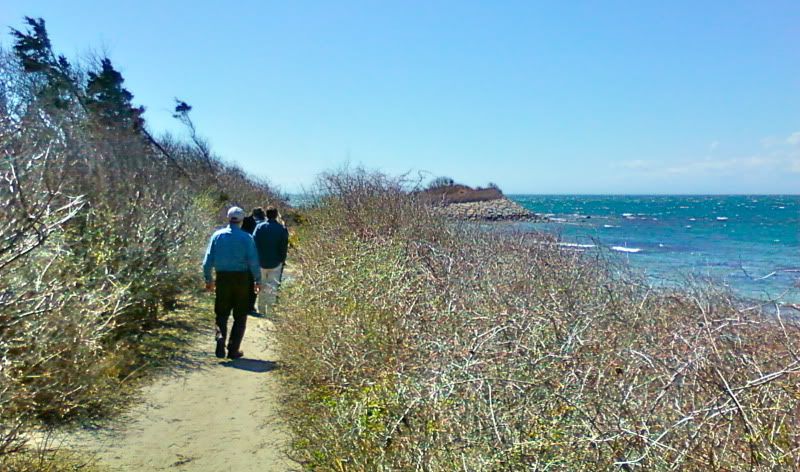
On the drive to Cape Cod one crosses an impressive man-made hydrological feature called the Cape Cod Canal, which connects waters above and below the Cape to allow shorter and safer passages by ships. I hadn't even known the thing existed, so I was thrilled by how
awesome it was, especially since the day we stopped there was very windy, causing the canal to look just like the Pacific Northwest's
Columbia River Gorge. I wonder if anyone ever windsurfs in it?
The swells looked nice.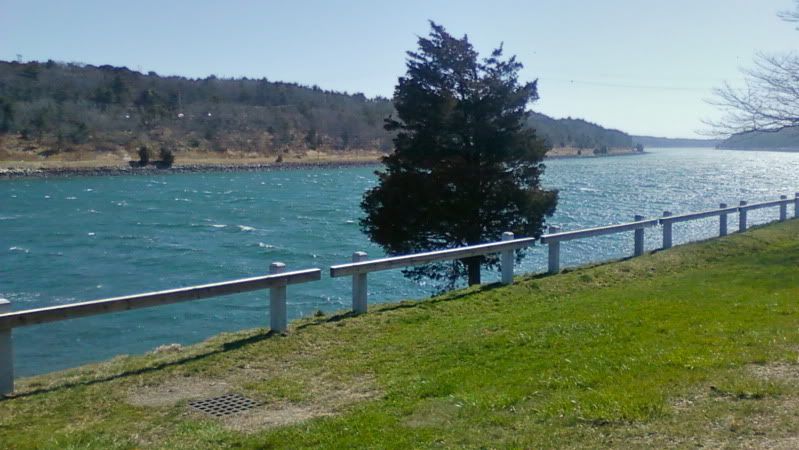
Anyway,
NEAS was a great conference and I got a good response to my poster explaining the seaweed biodiversity experiment that pays my bills now. The slideshow below shows "plots" from the experiment. The plots are marked by a bolt drilled into the rock of the intertidal zone. The mini hula-hoop denotes the boundaries of the plot, within which we have weeded some of the seaweeds away to create "monocultures" of certain species. Thus, our three seaweed diversity treatments are:
Control (no weeding),
Ascophyllum monoculture (everything but that species weeded away),
Fucus monoculture,
Mastocarpus monoculture, and
Polyculture (mix of the three main species, but thinned out to have the same starting density as a monoculture).
